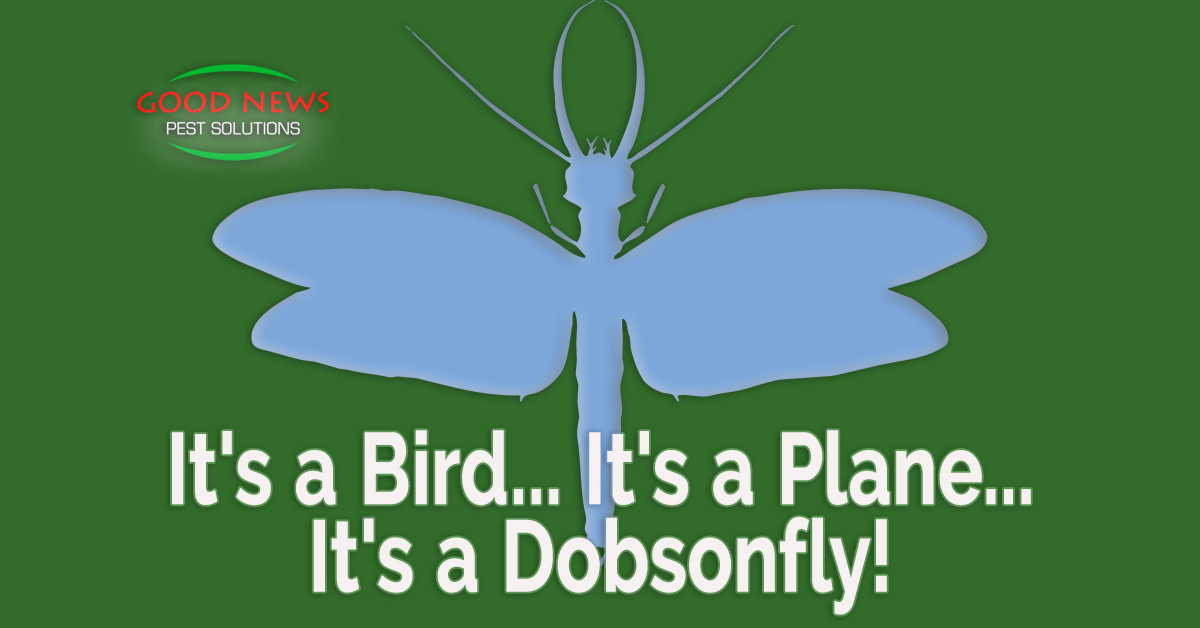
It's a Bird...It's a Plane...It's a Dobsonfly!
You’d be forgiven if your first reaction to seeing a Dobsonfly was to recoil in fear. They really can be quite disconcerting and scary in appearance. But there are few insects who better embody the old adage – its bark is worse than its bite.
It doesn’t help that the Corydalus cornutus uses its frightening appearance and giant looking mandibles to both scare off potential predators and hold fast to their females when it’s time to mate. Adult Dobsonflies are one of the largest non-butterfly insects you’ll encounter in the wild. But size isn’t everything.
For one, those giant pinchers? They’re too big. They might look fearsome; they’re good for impressing the ladies; but they’re so long and unwieldy, they cannot pierce our skin. That’s one of the reasons they use intimidation as a protective mechanism. One on one they’re easily batted away without incident.
Unless they’re females – in this case, the fairer sex can be more violent. Their shorter mandibles can draw blood – but have no venom. And they have little interest in what you can offer. Adult Dobsonflies don’t eat and females usually die 10 to 14 days after they’re fully grown. The males get about 3 days as an adult before they expire.
While you might encounter a Dobsonfly in your home, they’re more commonly found near bodies of water. They’re active from late spring to mid-summer and are primarily nocturnal. Like moths, they are drawn to the light.
In his book Insect Life, published in 1897, eminent entomologist John Henry Comstock refers to the Corydalus as Dobsonflies and the larvae as Hellgrammites, with no additional explanation.
Going Fishing
The less scary appearing – and far more useful – portion of the dobsonfly life cycle happens before they’re fully developed. Their larval form, also known as hellgrammites, are popular as live fishing bait and a model for several popular angler lures.
Hellgrammites look similar to underwater centipedes. They have two to three inch long, brown, segmented bodies, with large heads and big mandibles. Only these are much more effective. The larvae hide under rocks and along the bottoms of streams and will eat almost anything that happens across their hiding spot.
In fact, these ferocious hunters can even attack and eat small fish, turning the tables on their number one predator. There’s some irony that the scarier they look, the safer they are, and vice versa.
What’s really weird is that each segment of a hellgrammite’s body has its own legs – and feathery gills!
Dobsonfly larvae are a big help to survivalists and preppers as well as fishermen. While they aren’t quite as sensitive to pollution as some other insects, their presence is a good indicator of overall stream health. If you see adult Dobsonflies around, know that you are near a clean water source.
We should note that, despite their name, Dobsonflies are not true flies. Dobsonflies belong to the order Megaloptera, while houseflies belong to the order Diptera. If you’re dealing with houseflies, horse, or deer flies in your home or backyard, we can help. Go Green Perimeter Plus is our most popular and affordable solution for the standard creepy crawlies that invade Florida homes. Plus, it’s safe for your family and the environment. For more details, or to schedule your first inspection, please give us a call!
Proudly Serving
Sun City Center, Ruskin, Palmetto, Parrish, Ellenton, Bradenton, Anna Maria, Holmes Beach, Bradenton Beach, Longboat Key, Lakewood Ranch, University Park, Myakka City, Sarasota, Siesta Key, Osprey, Nokomis, Casey Key, Venice, Englewood, North Port, Port Charlotte, Punta Gorda, Arcadia
Things You Can Do
Pay Your Bill Online
Leave Us a Review
Request a Free* Termite Inspection
Stop Mosquito Bites
Get Rid of Rodents
Get a Termite Damage Warranty
Get Pest Control for Your Attic
Get Pest Control for Your Business Request Prayer
Corporate Address
1080 Enterprise Court, Ste A
North Venice, FL 34275
Call Now: (941) 412-9610
Text: (941) 412-9610
Fax: (941) 412-0080
